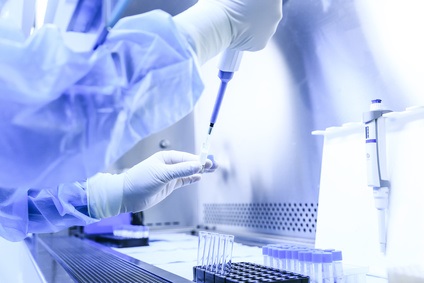2017/10/28

Laboratory medicine has traditionally been synonymous with clinical pathology to describe laboratory-related medical disciplines, including chemical pathology, laboratory hematology, and microbial pathology. However, laboratory medicine has gradually been adopted as the generic term for all laboratory-related disciplines, including microbiology and biochemistry. This shift in focus has opened the door for a variety of academic and organizational reforms.
Medical disciplines (including laboratory medicine) can be categorized according to their objectives, as follows: service to patients, service to students (academic), and service to science (research and publication). Laboratories provide the basis for all evidence-based medicine while providing a forum in which to develop expert resources at the postgraduate level.
The study of clinical pathology, microbiology, and biochemistry can be highly beneficial to medical undergraduates, particularly with regard to concept formation. Unfortunately, conventional instruction in these areas is of little relevance to the daily operations in hospital laboratories. Postgraduate courses in clinical pathology provide no background in anatomic pathology, histochemistry/cytochemistry, and molecular diagnosis. Postgraduate training in biochemistry includes metabolomics, proteomics, genomics, and epigenomics, whereas postgraduate training in medical microbiology includes bacteria, parasites, fungi, viruses, and bacteriophages, as well as the diagnosis of disease at the biochemical, serological, and molecular levels. Immunology and molecular biology are addressed in clinical pathology, microbiology, and biochemistry.
Smart labs are a recent development aimed at minimizing turn-around-times (TATs) and facilitating the efforts of clinical consultants. Considering the importance of such facilities, it is striking to note the lack of postgraduate courses designed to prepare individuals in their operations. There is a growing need for courses on laboratory medicine to deal with issues pertaining to automation, microscopy, reagent procurement, and total quality management, as well as safety, ethics and legal practices.
Laboratory medicine has emerged as an independent postgraduate medical discipline in India and Bangladesh. India’s premier medical institute, AIIMS, founded this discipline in 1988 and has been offering a postgraduate course with a three-year residency program since 1997. Bangladesh established clinical pathology as a distinct discipline in 2014. The initial two-year diploma course was replaced in 2017 with a three-year postgraduate course in laboratory medicine. Laboratory medicine in India, Bangladesh, and Canada (where it is called “general pathology”) is a bottom-line diagnostic service managed by laboratory physicians with postgraduates trained specifically in this field. This arrangement has proven highly effective in the delivery of integrated diagnostic services in the areas of clinical pathology, laboratory hematology, microbiology, clinical biochemistry, and rapid molecular testing. This integrated approach has also helped to ensure quality, minimize TATs when facing enormous populations over vast geographic areas, and reduce operating expenses. Integrated programs open up opportunities for super-specialties or postdoctoral fellowships in neuro-, renal, dermato-, and gastrointestinal pathology, hematology, virology, parasitology, nanomedicine, genetics, immuno-, and molecular medicine.
Shifting the academic orientation of laboratory-related disciplines can greatly facilitate organizational reform, particularly in teaching hospitals. The diagnostic block can be divided up according to the type of laboratory facility. Tier I: laboratories in central hospitals with a central phlebotomy facility (laboratory medicine) and blood bank services (transfusion medicine). Both facilities are poly-disciplinary in nature, catering to in-patients as well as outpatients. Transplantation medicine and reproductive medicine laboratories can be regarded as specialized divisions of laboratory medicine. Tier II: laboratories dealing with anatomic pathology, microbiology, and biochemistry. Tier III: laboratories in medical institutes that are used as research facilities using high-end equipment, such as mass spectroscopes, LC-MS, GC-MS ICP-MS, confocal microscopes, cell sorters, molecular tracers, image analyzers, stem cell facilities, and organoid research facilities.
TATs in these facilities are as follows: Tier I (a few minutes to a few hours); Tier II (12-72 h); and Tier III (one week). The typical operating hours of these facilities are as follows: Tier I (around the clock); Tier II (9 AM to 5 PM); and Tier III (as needed). The management of the facilities is as follows: Tier I (laboratory physicians); Tier II (postgraduates and consultants); and Tier III (laboratory scientists with Ph.D. degrees). The scope of Tier III facilities is basically unlimited, i.e., it includes basic cell biology, cybersemiotics, synthetic biology, biologically inspired systems science (BISS), bio-robotics, and personalized medicine.
Integrating laboratory information systems into a single block provides a one-window solution for patients and comprehensive training for residents. This approach also provides mechanisms for inter-laboratory and laboratory-clinician dialogues, which can be used to generate revenue for the hospital, research papers for the institution, and experts for the nation.
It is crucial to remember that medical laboratories cannot be run without trained technologists. Training should be organized at the undergraduate (B.Sc.), postgraduate (M.Sc.), and super-specialty levels (Ph.D.), with corresponding appointments to Tier I, Tier II, or Tier III facilities.
Let us declare this as the decade of the lab. It is time to reorganize the discipline of medical laboratory science at the functional level as well as in academics. It is time to address the issues of relevance to laboratory physicians (Tier I and II), laboratory scientists (Tier III), and highly-trained technologists at all levels. Let the Journal of Laboratory Medicine beckon this future.
Ashok Kumar Mukhopadhyay. Medical Laboratory Disciplines: Time for Academic Reform and Structural Organization. Journal of Laboratory Medicine. 2017;1(1):2. DOI: 10.24983/scitemed.jlm.2017.00032 (View Article)